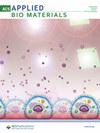Establishment and validation of a 5-factor diagnostic model for obstructive and non-obstructive azoospermia based on routine clinical parameters
IF 4.6
Q2 MATERIALS SCIENCE, BIOMATERIALS
引用次数: 0
Abstract
Azoospermia is a serious leading male-factor cause of infertility in couples of childbearing age. The two main azoospermia types, obstructive (OA) and non-obstructive (NOA) azoospermia, differ in their treatment approaches. Therefore, their clinical diagnosis is extremely important, requiring an accurate, efficient, and easy-to-use diagnostic model. This retrospective observational study included 707 patients with azoospermia treated between 2017 and 2021, 498 with OA, and 209 with NOA. Hematological and seminal plasma parameters, hormone levels, and testicular volume were used in logistic regression analysis to evaluate and compare their diagnostic performance, results showed that the optimal diagnostic model is constructed by five variables including semen volume, semen pH, seminal plasma neutral α-glucosidase activity, follicle-stimulating hormone in the serum, and testicular volume, compared with follicle-stimulating hormone-based and testicular volume-based models. The 5-factor diagnostic model had an accuracy of 90.4%, sensitivity of 96.4%, positive predictive value of 90.6%, negative predictive value of 89.8%, and area under the curve of 0.931, all higher than in the other two models. However, its specificity (76.1%) was slightly lower than in the other models. Meantime, the internal 5-fold cross-validation results indicated that the 5-factor diagnostic model had a good clinical application value. This study established an accurate, efficient, and relatively accessible 5-factor diagnostic model for OA and NOA, providing a reference for clinical decision-making when selecting an appropriate treatment.根据常规临床参数建立并验证梗阻性和非梗阻性无精子症的 5 因子诊断模型
无精子症是导致育龄夫妇不育的一个严重的主要男性因素。梗阻性(OA)和非梗阻性(NOA)无精子症是两种主要的无精子症类型,它们的治疗方法各不相同。因此,它们的临床诊断极为重要,需要一个准确、高效且易于使用的诊断模型。这项回顾性观察研究纳入了2017年至2021年间接受治疗的707例无精子症患者,其中498例为OA,209例为NOA。将血液学和精浆参数、激素水平、睾丸体积用于逻辑回归分析,评估和比较其诊断性能,结果显示,与基于卵泡刺激素和基于睾丸体积的模型相比,由精液量、精液pH值、精浆中性α-葡萄糖苷酶活性、血清中卵泡刺激素和睾丸体积等5个变量构建的诊断模型最优。五因素诊断模型的准确率为 90.4%,灵敏度为 96.4%,阳性预测值为 90.6%,阴性预测值为 89.8%,曲线下面积为 0.931,均高于其他两个模型。但其特异性(76.1%)略低于其他模型。同时,内部 5 倍交叉验证结果表明,5 因子诊断模型具有良好的临床应用价值。本研究为 OA 和 NOA 建立了一个准确、高效且相对易用的 5 因子诊断模型,为临床选择合适的治疗方法提供了决策参考。
本文章由计算机程序翻译,如有差异,请以英文原文为准。
求助全文
约1分钟内获得全文
求助全文

 求助内容:
求助内容: 应助结果提醒方式:
应助结果提醒方式:


